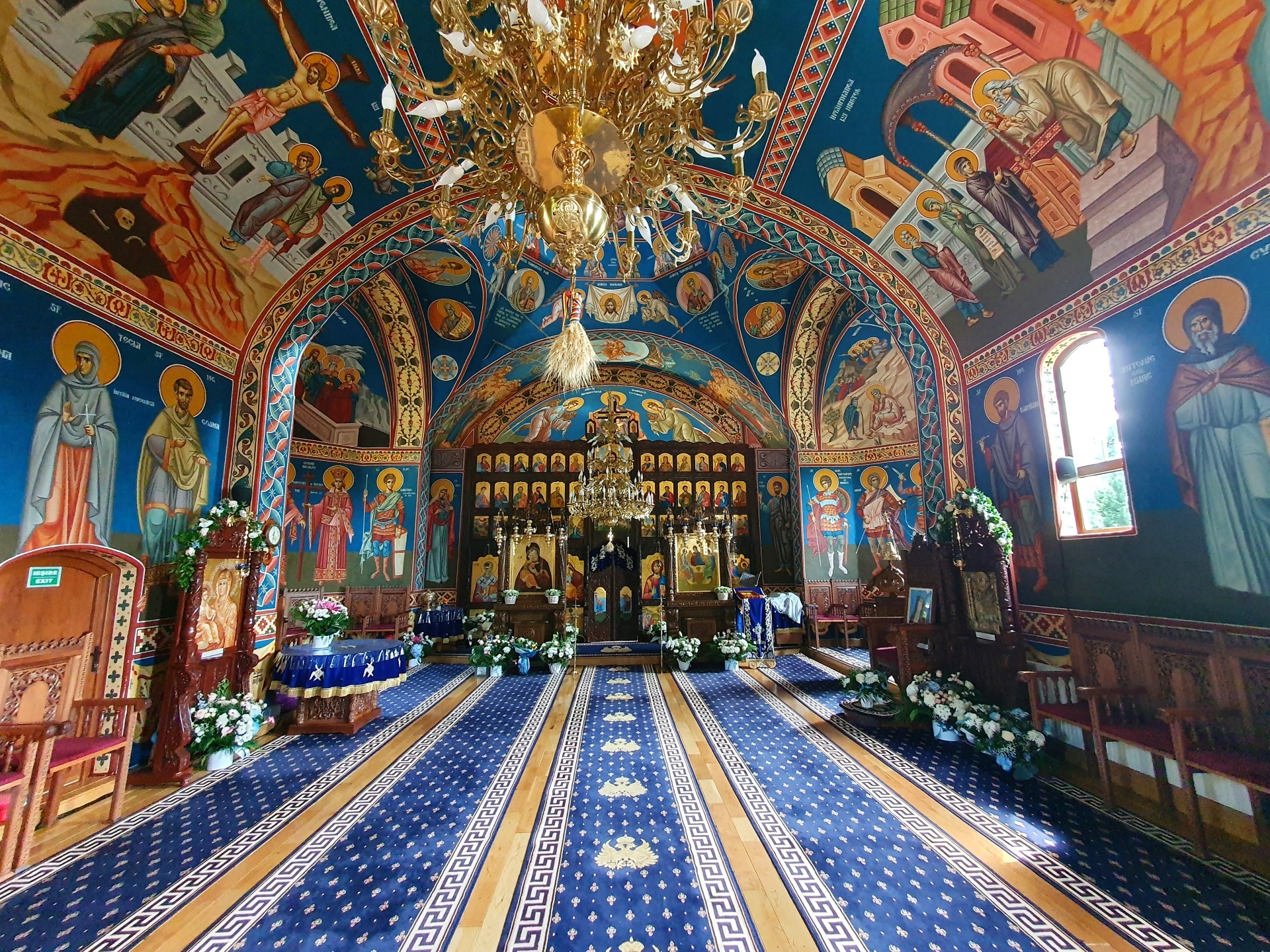The Huta-Certeze Monastery (Mănăstirea Huta-Certeze in Romanian) is an orthodox monastery in the village of Moișeni (Mózesfalu in Hungarian), about 2 kilometers (in direct line) from the border with Ukraine, in the Satu Mare County, belonging to the Oaș ethnocultural & historical region (Țara Oașului in Romanian, Avasság in Hungarian). The wooden monastery was built in 2004, in the Moldavian style. It’s the only nuns monastery in the Oaș area and it was dedicated to the Holly Trinity, which is the second day after the Pentecost.
Administratively, the lands of the monastery belong to the Commune of Certeze, famous in the entire country for its large and expensive houses, and for being one of the first places from which the Romanians left the country when the borders were open to the rest of Western Europe. The Oaș Country is a mixture of people with various backgrounds and languages, but it is also distinct from the rest of Romania when it comes to customs and traditional clothes. Certeze is known as Neudorf in German and Avasújfalu in Hungarian, while Huta-Certeze is known as Lajosvölgy in Hungarian and Ľudovítove údolie in Slovakian. Given the short distance to the border, you can find Romanian, Hungarian, German, Slovakian and Ukrainian communities sharing practically the same lands in an area of a couple of kilometers. This is typical to Transylvania, which is a mozaic of cultures, languages and people.
Although I was raised as an Ortodox Christian, I rarely share images of orthodox churches and monasteries, as I am more passionate about the Catholic spiritual world. For this reason, this article is an exception.
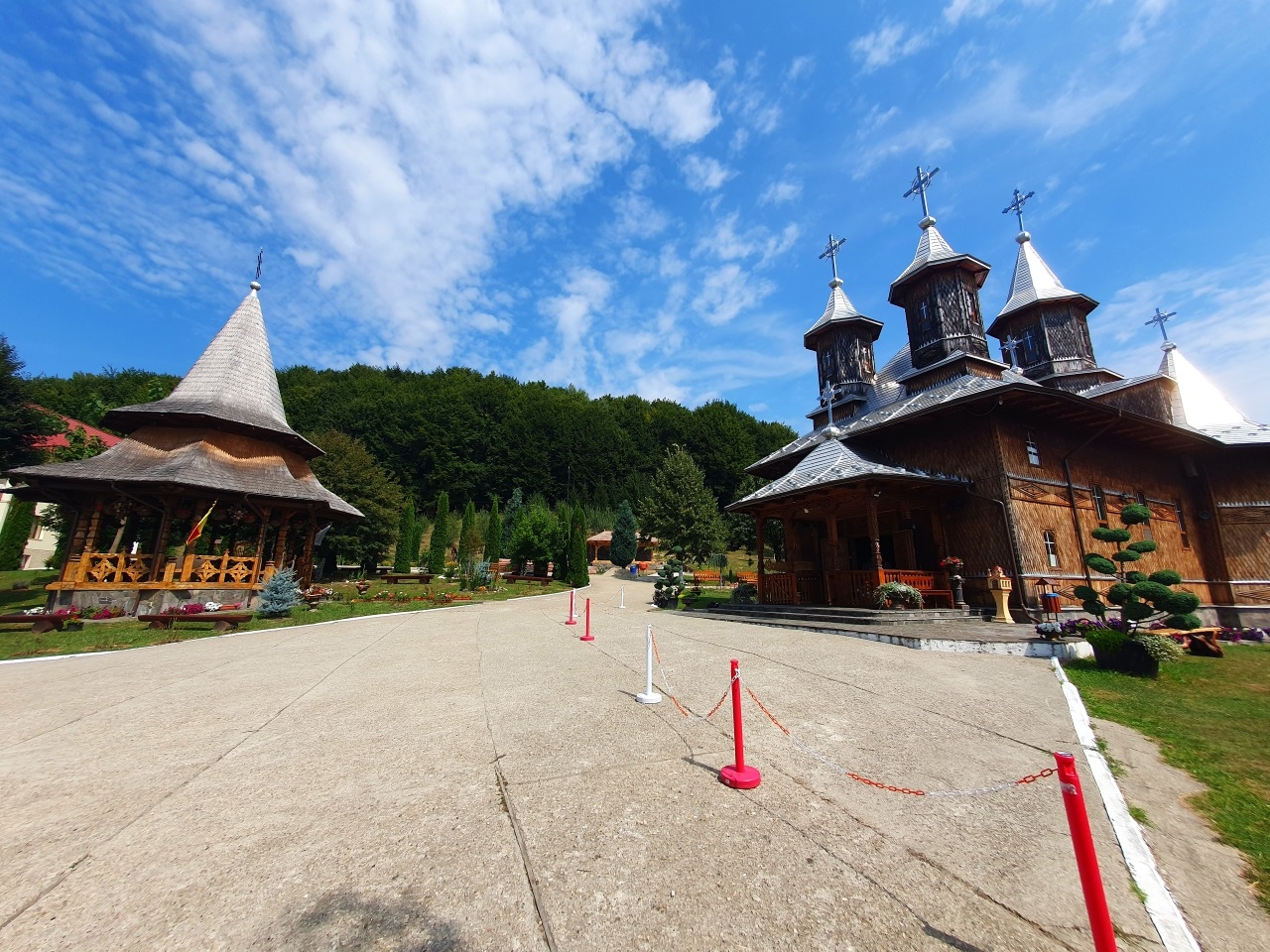
This is probably the most classic view of the monastery.
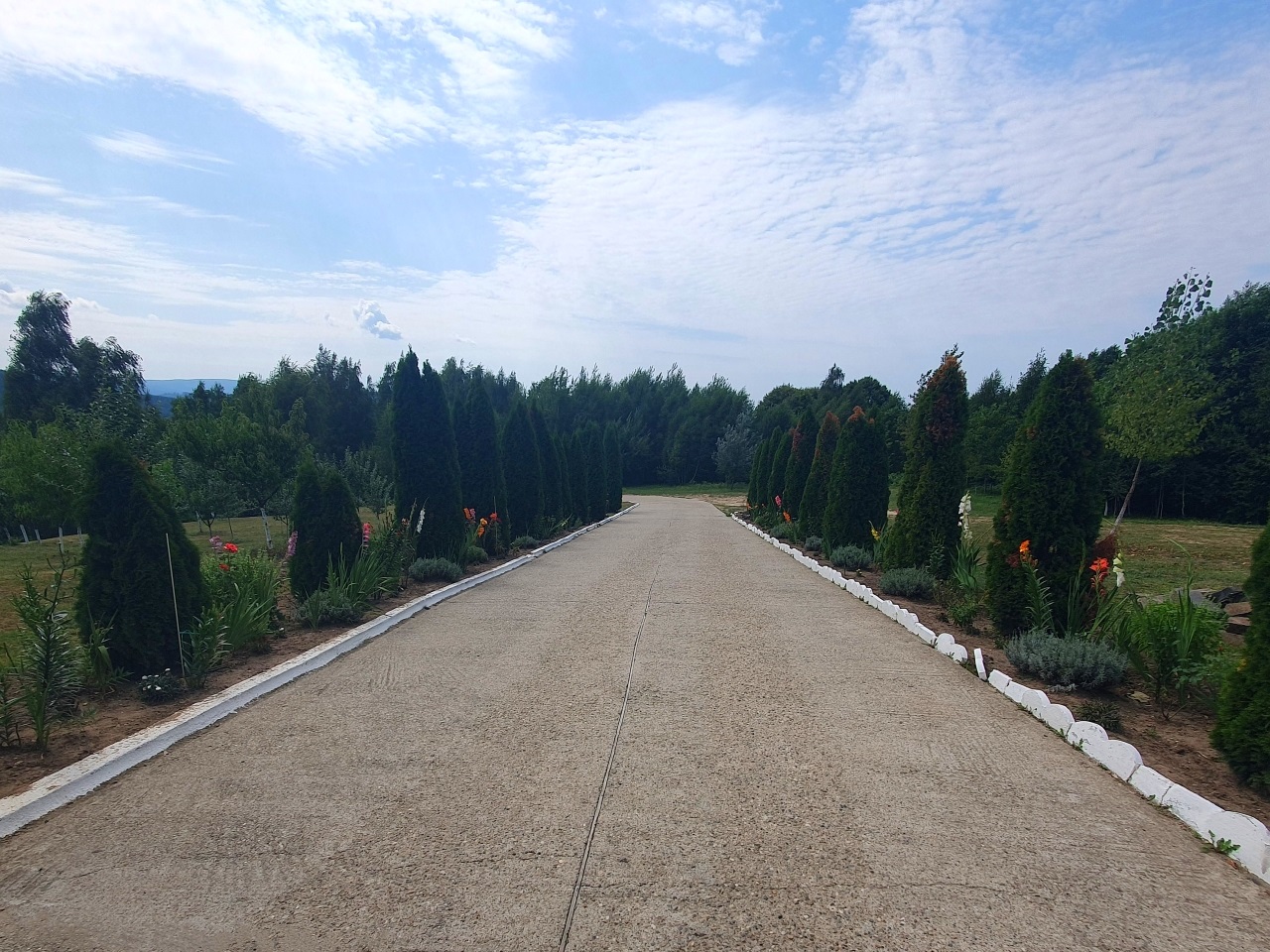
The entrance and the road to the monastery.
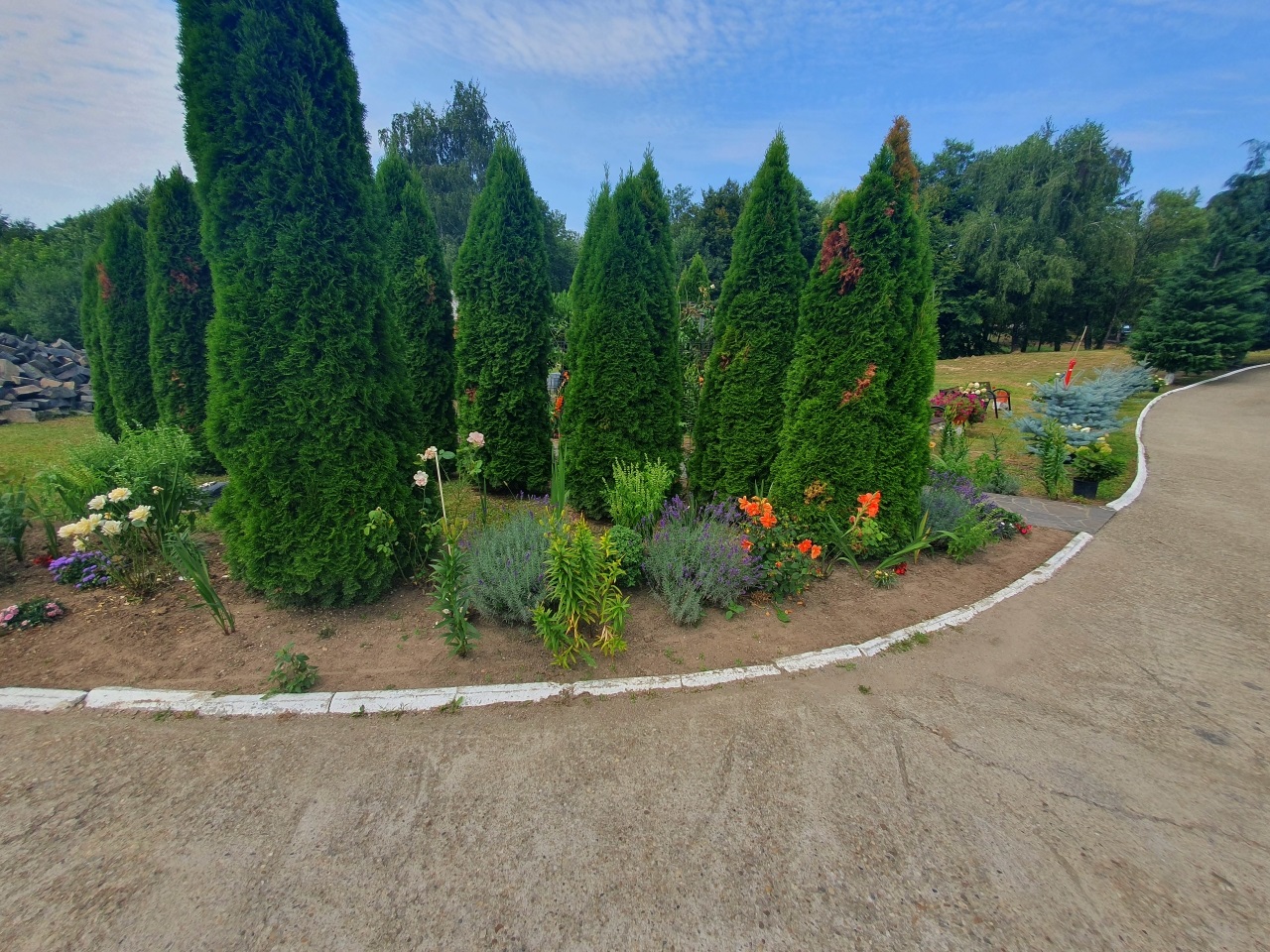
Nice gardens all around the monastery complex.

Resting place next to a fountain.

The monastery has 4 large bells. Here are 2 nuns using them to call everyone to prayer.

There is some sort of gazebo or pavilion where the religious service can be kept outside the church, either on a hot sunny day, or when the crowds are significant and the space inside the church is too small.

Some details of the entrance door.
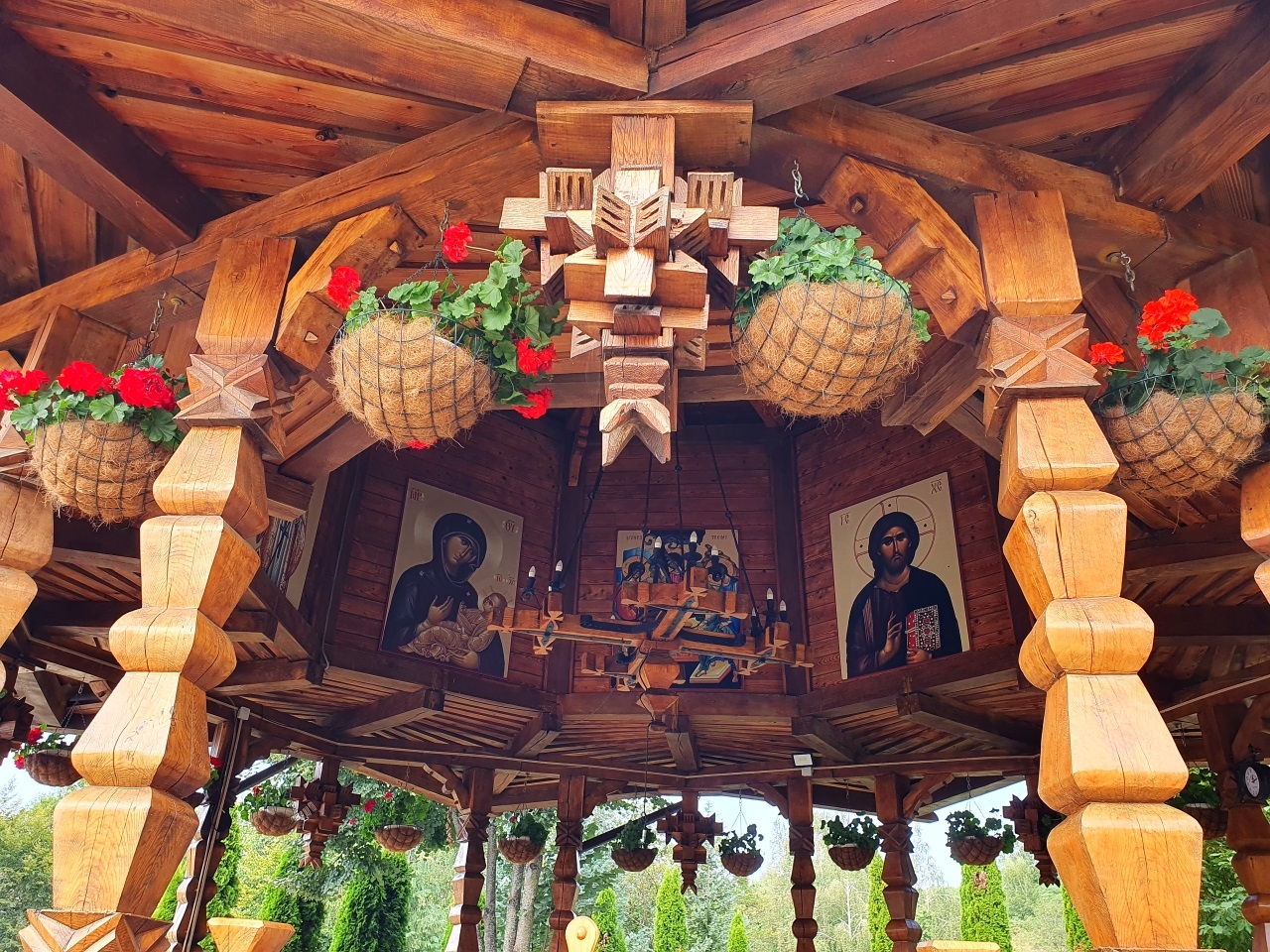
Upwards is the symbol of Maramureș – the Maramureș Knot – known also as the Dacian Knot. The monastery is at about 1 kilometer from Maramureș County and some symbols are common.
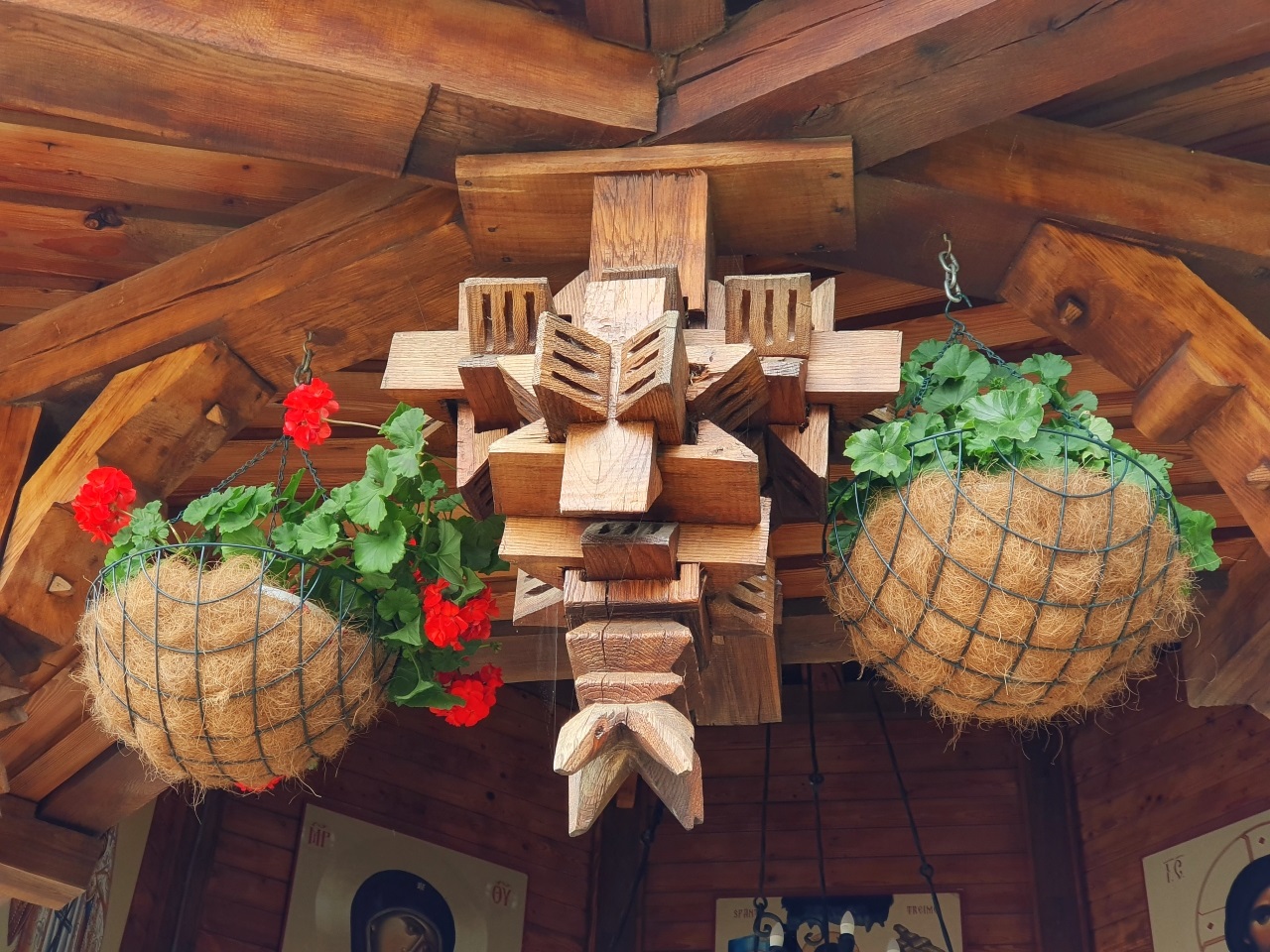
The Maramureș Knot (nodul maramureșean in Romanian) is some sort of a 3-dimensional wooden star that is kept together as long as the pieces are in the right place; it you take just one piece, the knot will fall apart. For this reason, people stick together in Maramureș, no matter what, as this gives them strength.

Inside the praying place.
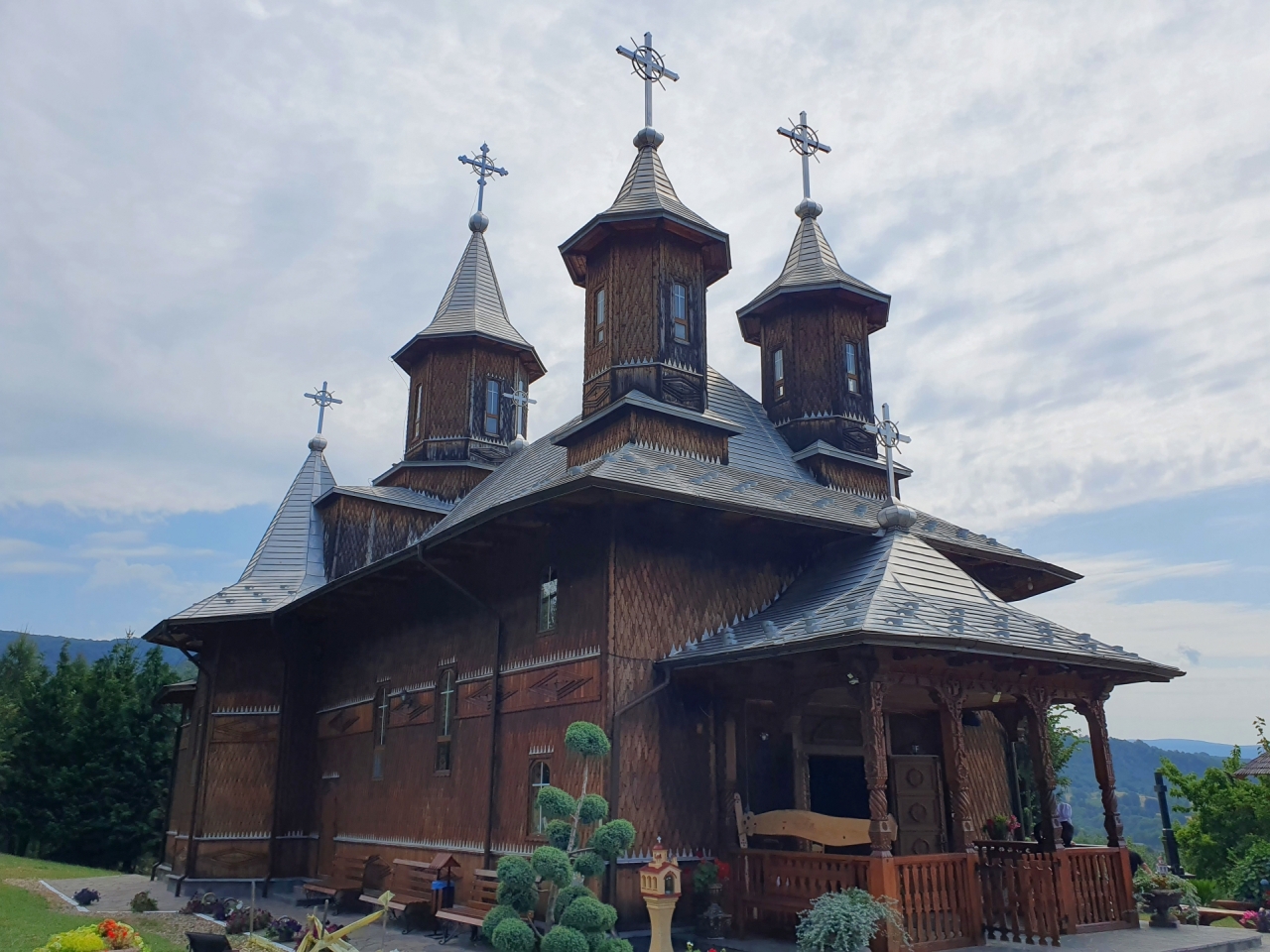
Another classical view of the wooden church.
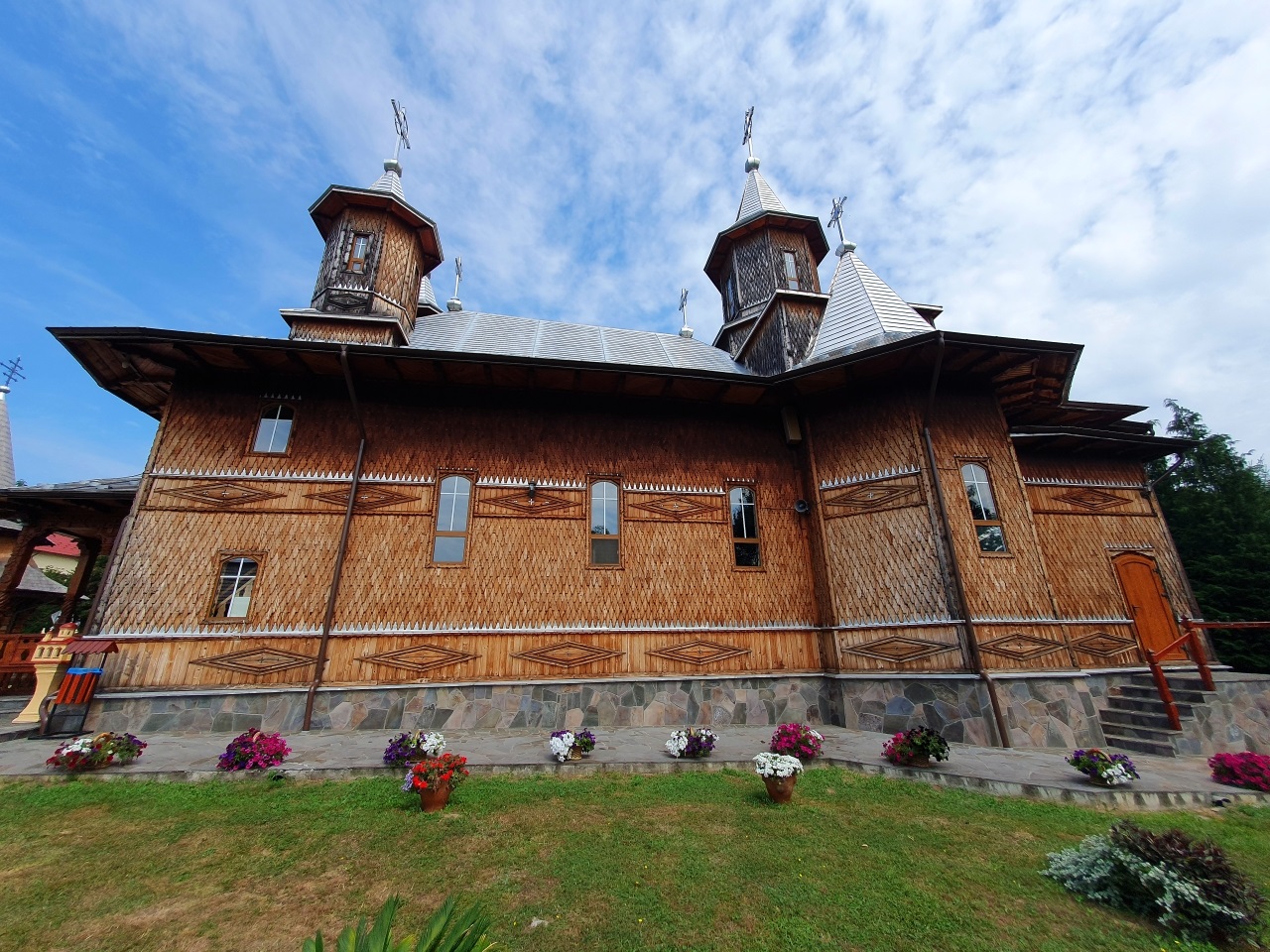
View from the side.
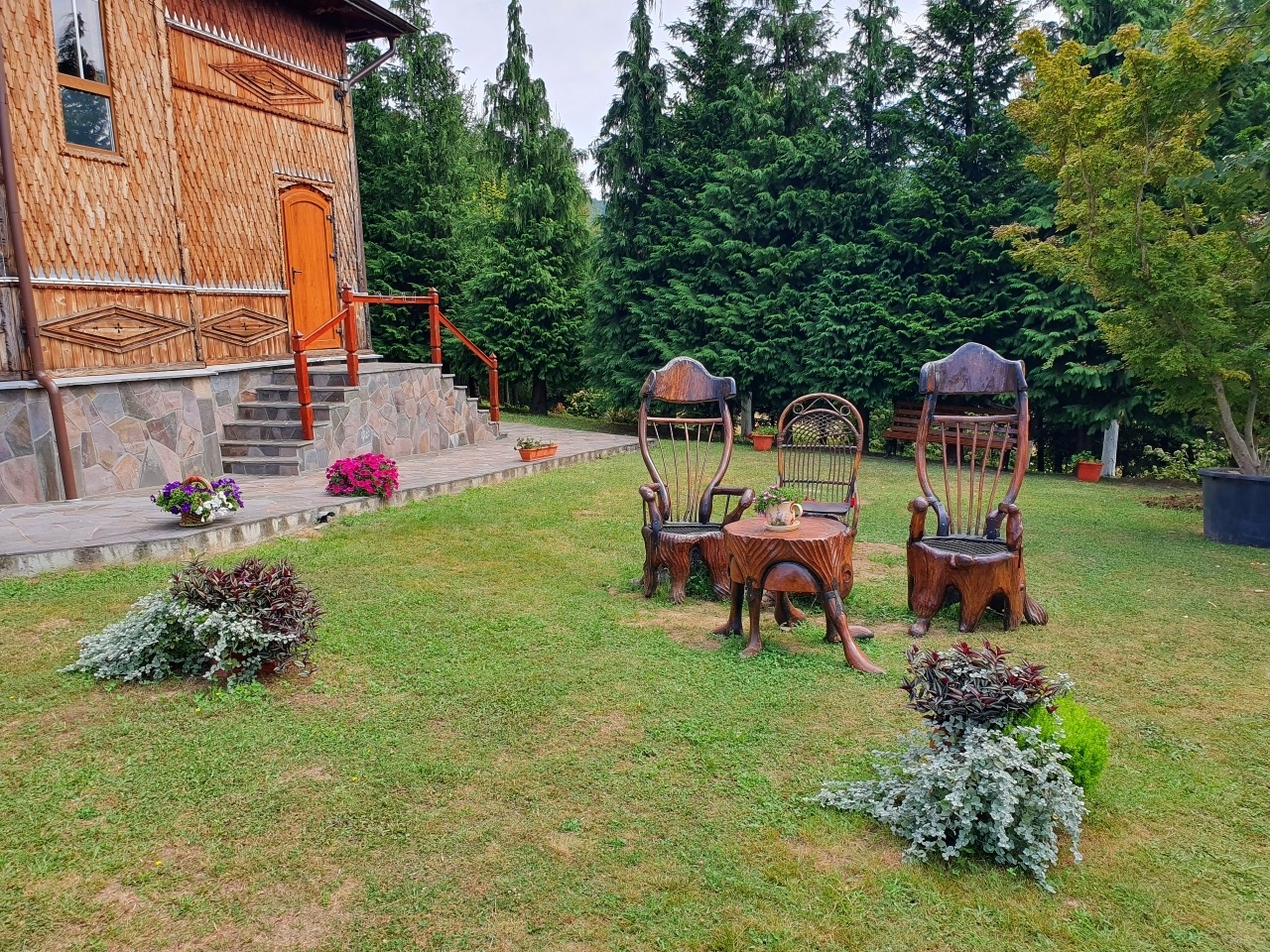
Some sculptures in wood in the garden.
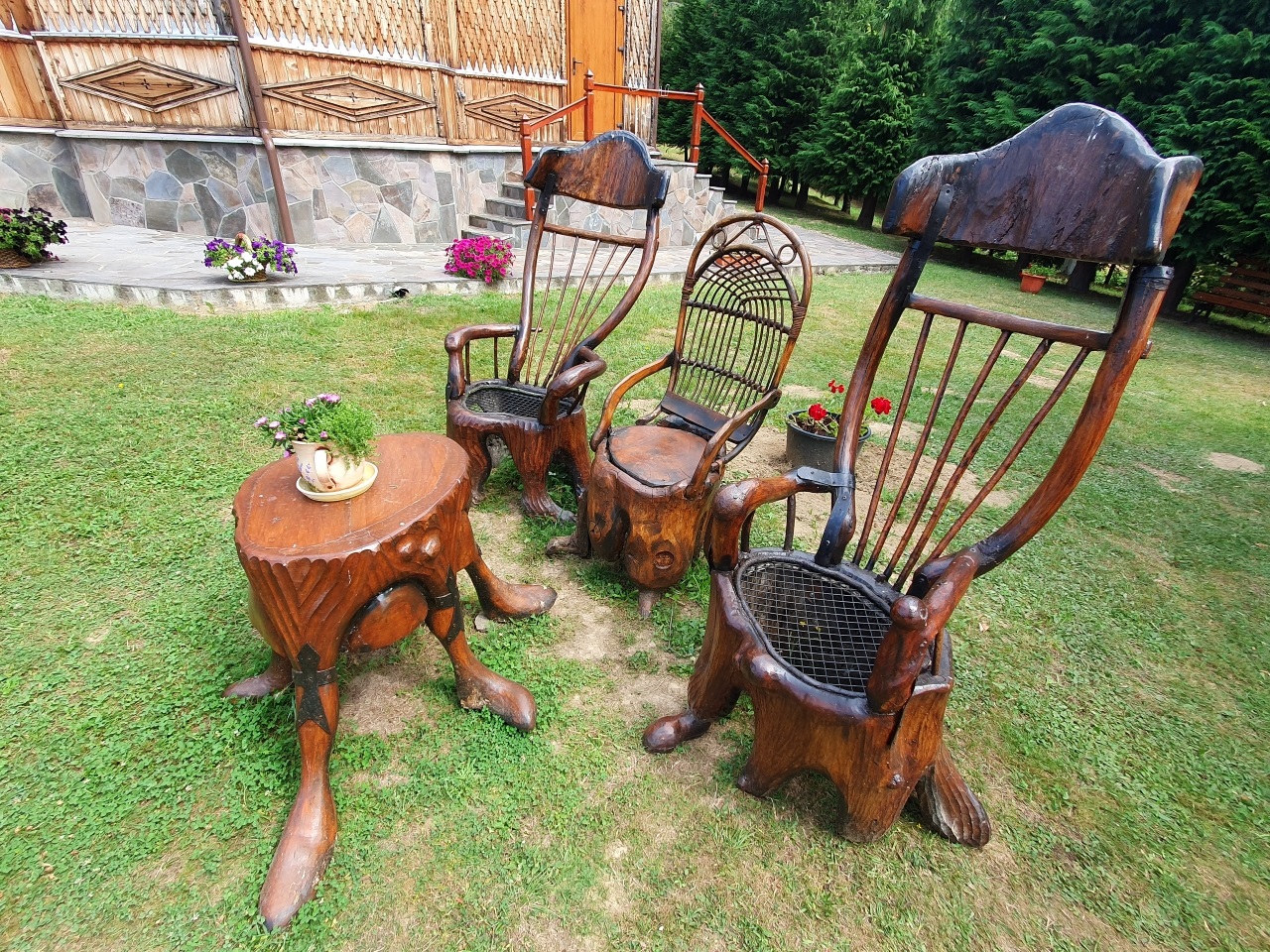
The place is essentially inside a large forest, so there is plenty of wood.
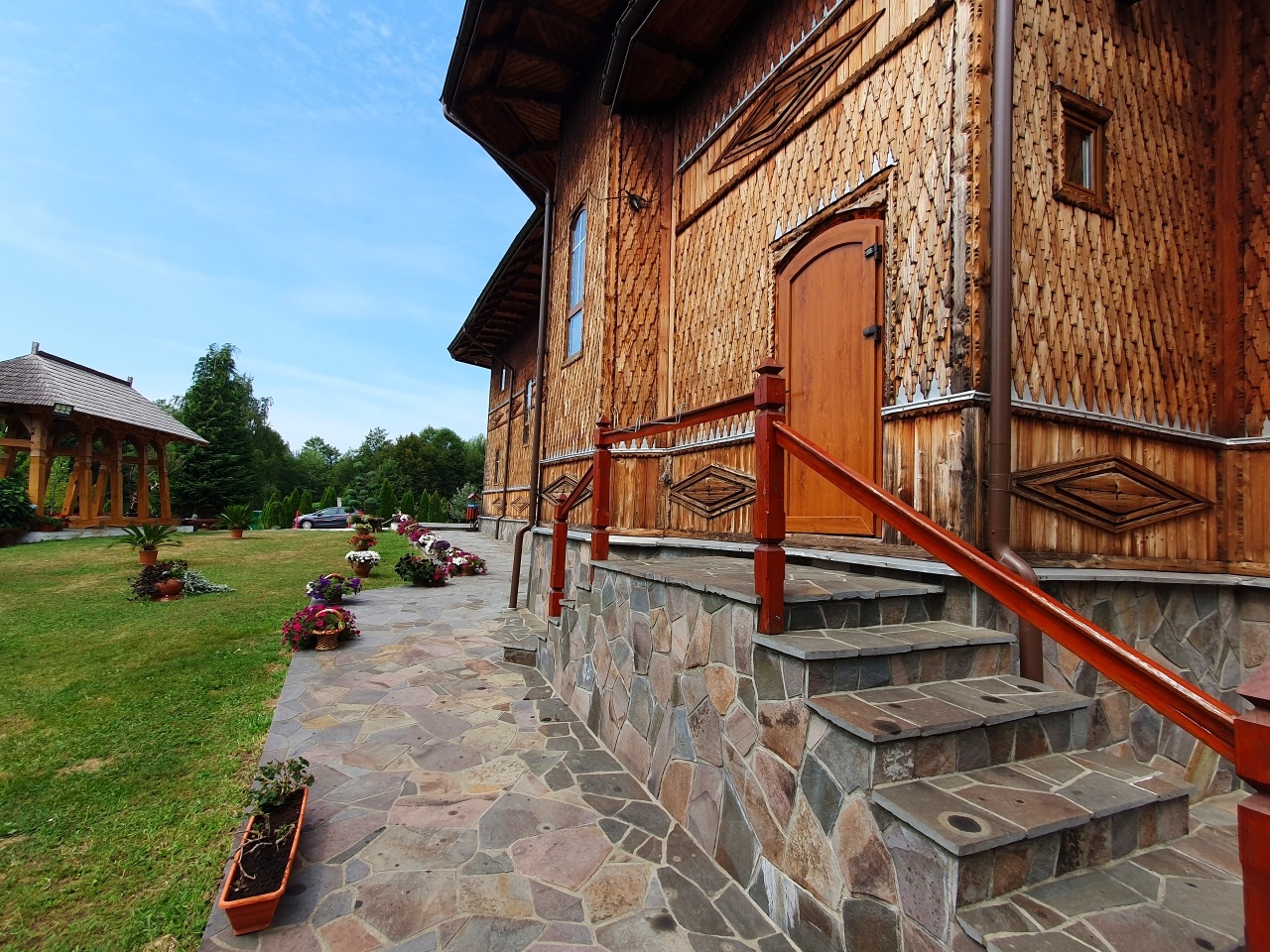
Going round the church.
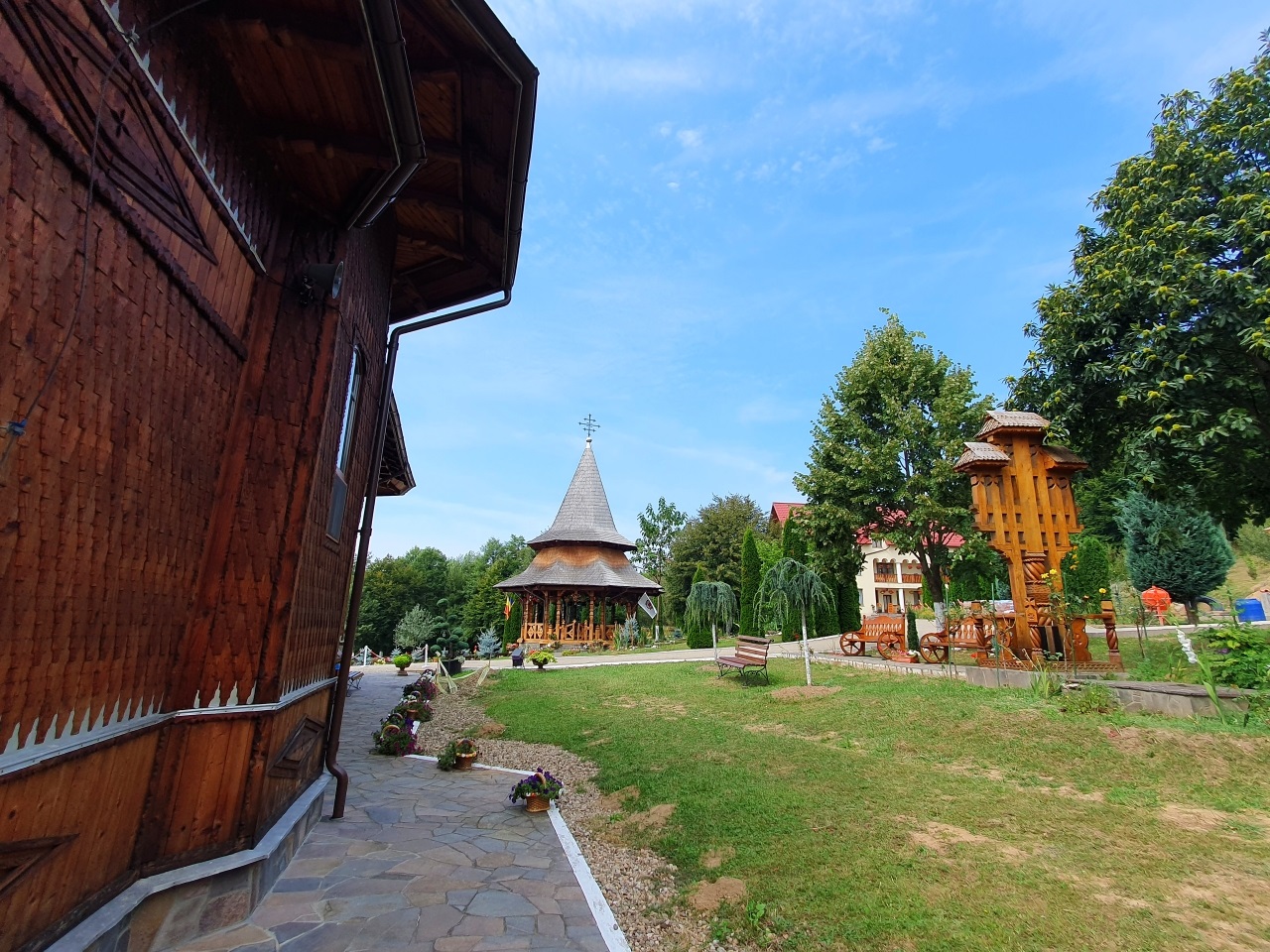
Religious artifacts, monuments, crosses…

Resting benches for prayer outside the church.

Another view of the bells.
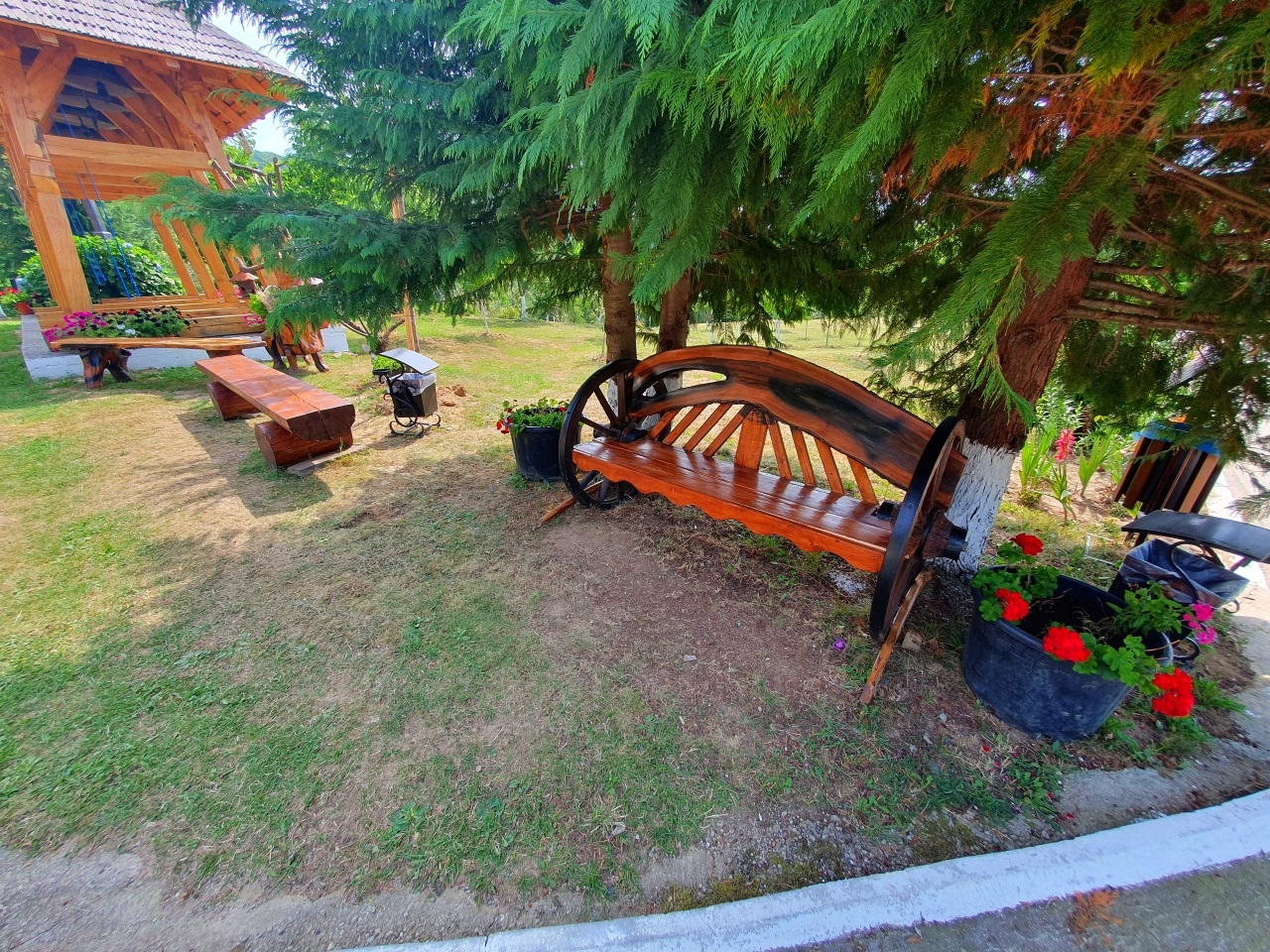
Places to stop and meditate.

Woodworks, some of them traditional, others just creative…

Well… this is how the inside of an orthodox church looks like…
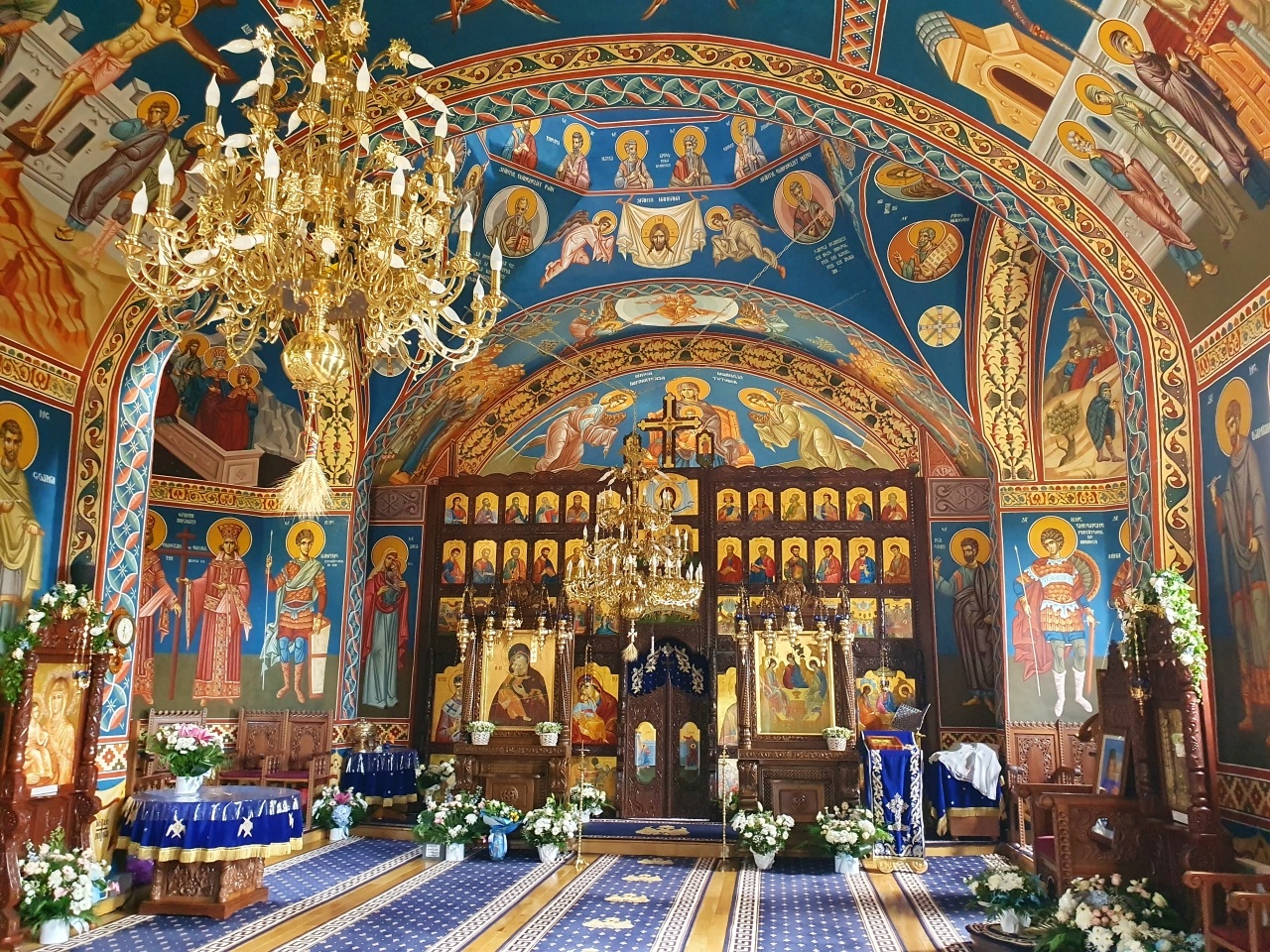
View towards the hidden altar behind the iconostasis (catapeteasma in Romanian), always pointing to the East. Women are not allowed in the altar; that place belongs to the priest (always a man).

The ceiling of the church.

Looking back to where in the Catholic churches an organ should be. In the ortodox churches that is the place of the choir (often chorus of nuns). Obviously, that points to the West.
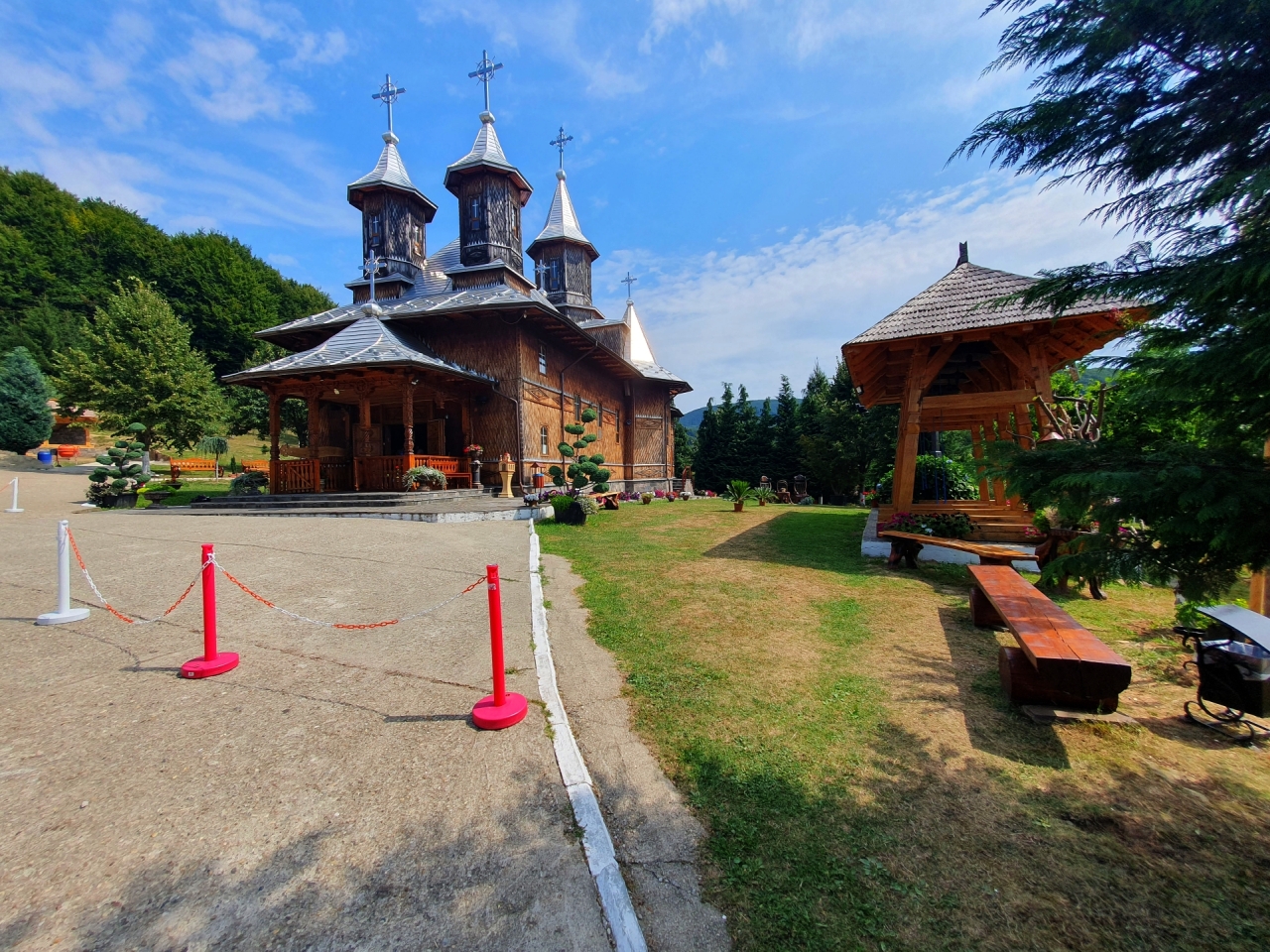
Time to say good bye to the monastery.

The exit marked by a traditional Maramureș wooden gate.
